Nikolaj Bendix Skyum Larsen
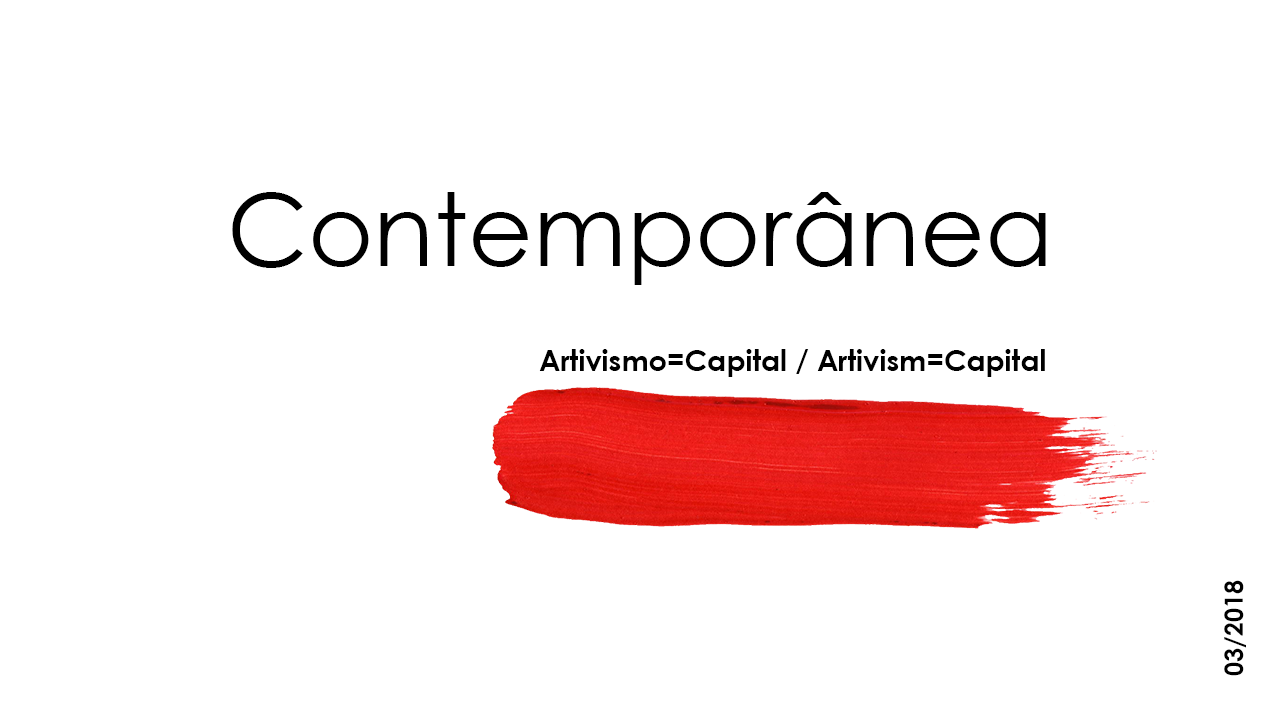
The Floating Series (2016-em curso)
A tarefa de traduzir visualmente a complexidade do mundo em que vivemos é, certamente, uma das tarefas mais desafiadoras e angustiantes para os artistas. A contemporaneidade global constitui-se numa multiplicidade de crises, no falhanço de promessas sociais e políticas e na criação de fronteiras em todo o mundo. Na Europa, novos conflitos tomam forma: da crise da Ucrânia ao Brexit, da emergência de novos fluxos de migração à ameaça do terrorismo, do populismo aos movimentos nacionalistas crescentes, as ideias outrora estáveis de pertença, coesão e hospitalidade são constantemente colocadas em causa. O que pode ser dito da nossa incapacidade de lidar com os fluxos migratórios crescentes? De que modo é que os artistas podem contribuir para tantos desafios políticos e humanitários?
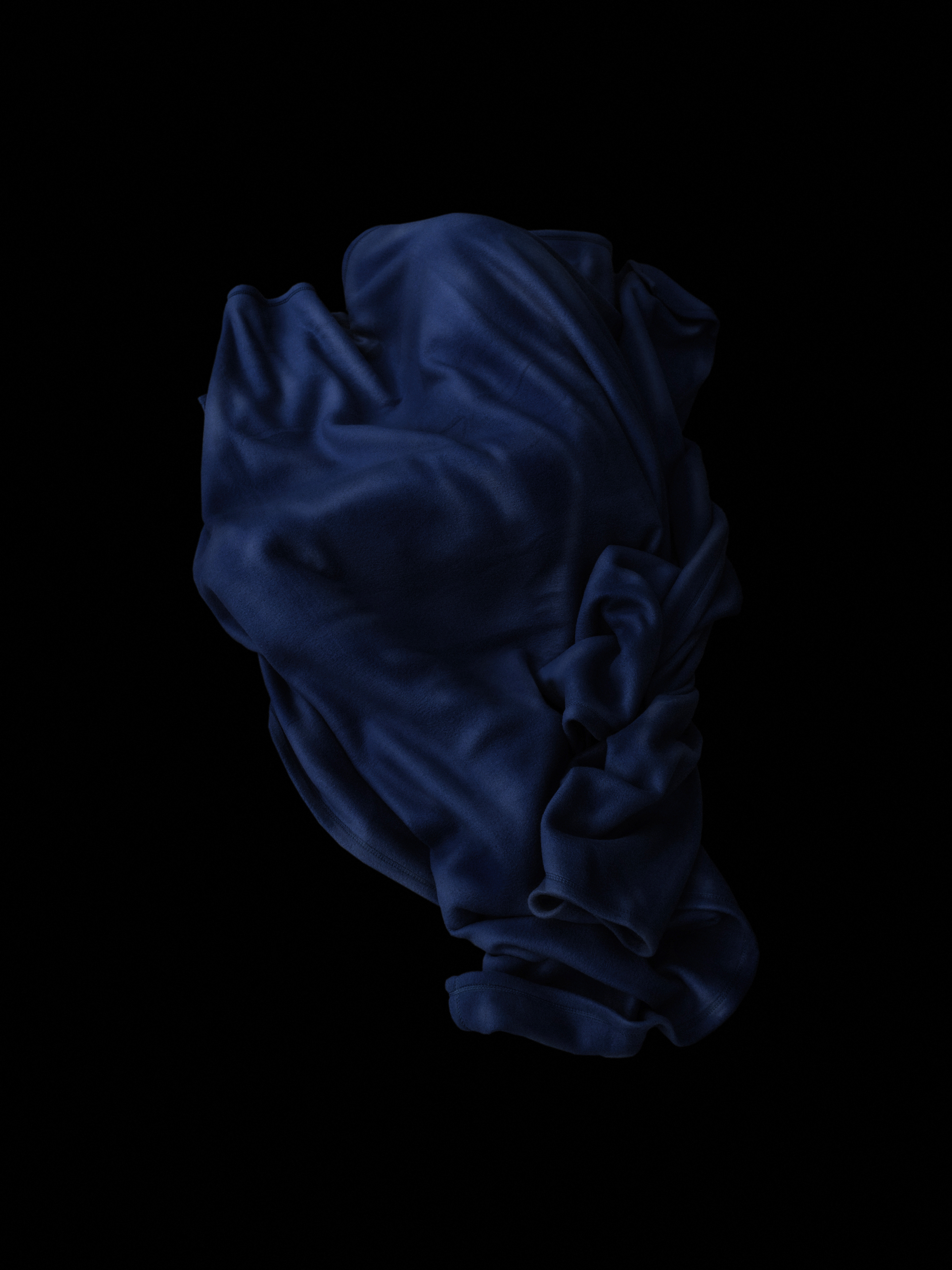
Floating #59 (2017)
Impressão com tinta à base de pigmentos em papel Hahnemuehle Fine Art Baryta
90cm x 67.5cm
© Cortesia de Nikolaj Bendix Skyum Larsen
É no seio da complexidade dos fenómenos conflituais contemporâneos, particularmente na Europa, que o trabalho de Nikolaj Bendix Skyum Larsen (1971, Dinamarca) se desenvolve. Tal é especialmente verdade no caso da série The Floating Series (em execução desde 2016), nas relações inesperadas que apresenta entre noções de visibilidade e invisibilidade.
The Floating Series consiste num conjunto de fotografias manipuladas, nas quais o principal motivo (corpos humanos integralmente cobertos por panos) é destacado, copiado para um fundo negro e, subsequentemente, retocado. Tal técnica aplicada nestas imagens de corpos completamente cobertos com tecidos coloridos, flutuando em fundos pretos, transportam-nos para o universo do chiaroscuro das pinturas Renascentistas, que abriu caminho ao tenebrismo do Barroco. Mais do que o universo formal de contrastes extremos entre luz e sombra, a composição evoca um efeito dramático dos retratos de aristocratas, autorretratos de artistas, naturezas-mortas e das passagens religiosas como a icónica Transfiguração de Cristo (1516-1520) de Rafael, na qual a técnica é uma ferramenta para representar Cristo enquanto luz que perpassa o mundo tenebroso da humanidade.
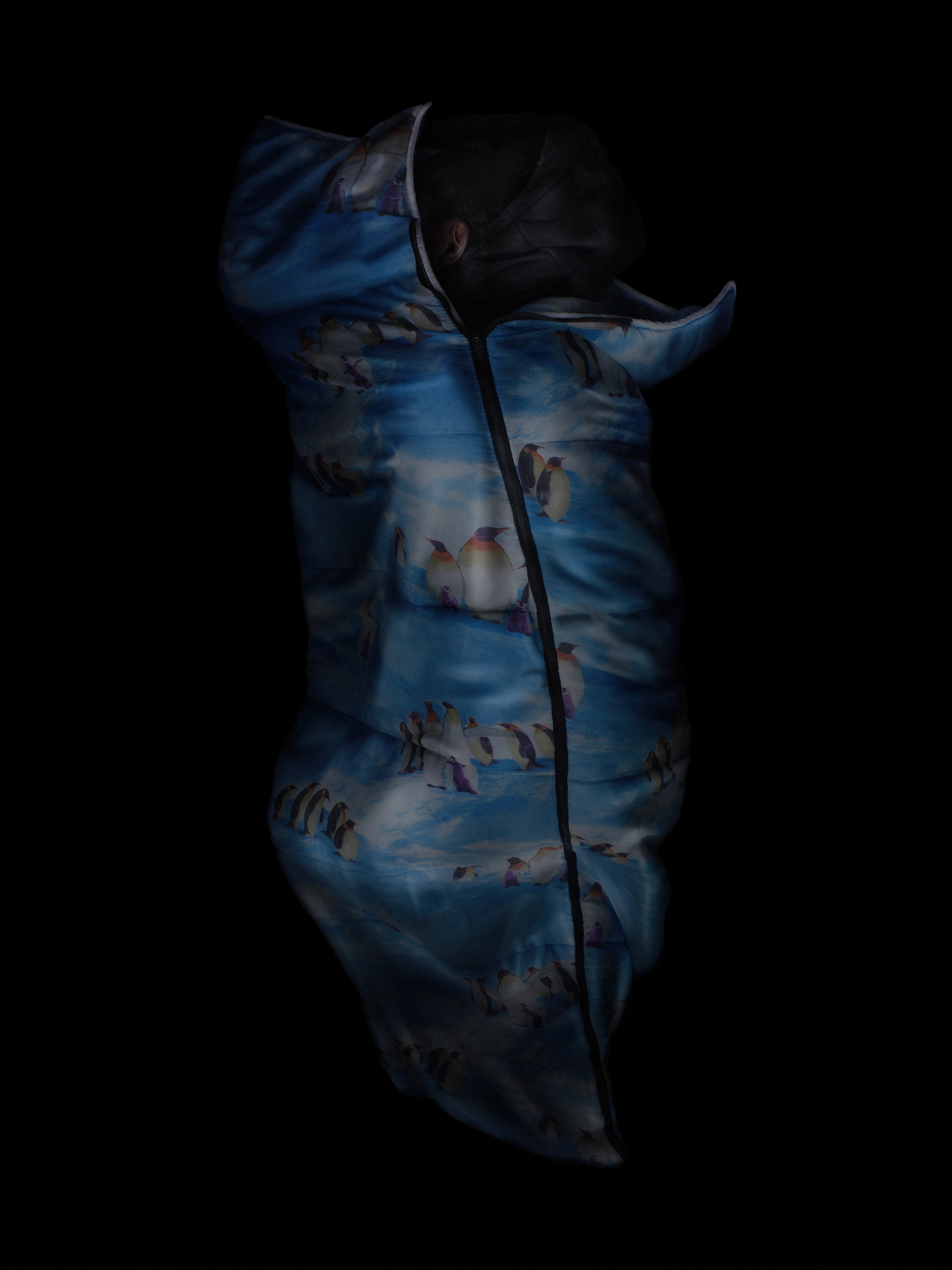
Floating #69 (2017)
Impressão com tinta à base de pigmentos em papel Hahnemuehle Fine Art Baryta.
90cm x 67.5cm
© Cortesia de Nikolaj Bendix Skyum Larsen
Contudo, os fundos negros de The Floating Series não retratam cenários de episódios religiosos, mas sim um vazio - como se este vazio infinito fosse um fardo que os migrantes estão determinados a carregar durante a sua viagem. Quanto aos indivíduos retratados, não estamos certamente perante aristocratas nem personagens bíblicos. Eles são, na verdade, migrantes que foram fotografados no bairro parisiense de Stalingrad em 2016. Durante dois meses, Nikolaj Bendix Skyum Larsen esteve lá, e nas conversas que teve sentiu a urgência de reagir visualmente ao desespero das pessoas que encontrou. Migrantes forçados a sair dos seus países para escapar à guerra, à opressão, à pobreza, para chegarem depois à Europa, onde encontrariam como única opção viver nas ruas, ruas das quais seriam, na maioria dos casos, retirados à força, como diriam os 2000 migrantes expulsos desta área de Paris em 2016. As pessoas por detrás destes tecidos são as mesmas que vivem na rua depois de percursos trágicos: qual o impacto desta informação na imagem? Será apenas mais uma imagem triste do nosso presente? Uma provocação para nos fazer agir sobre a realidade? Uma exploração da realidade das pessoas vulneráveis aqui representadas?
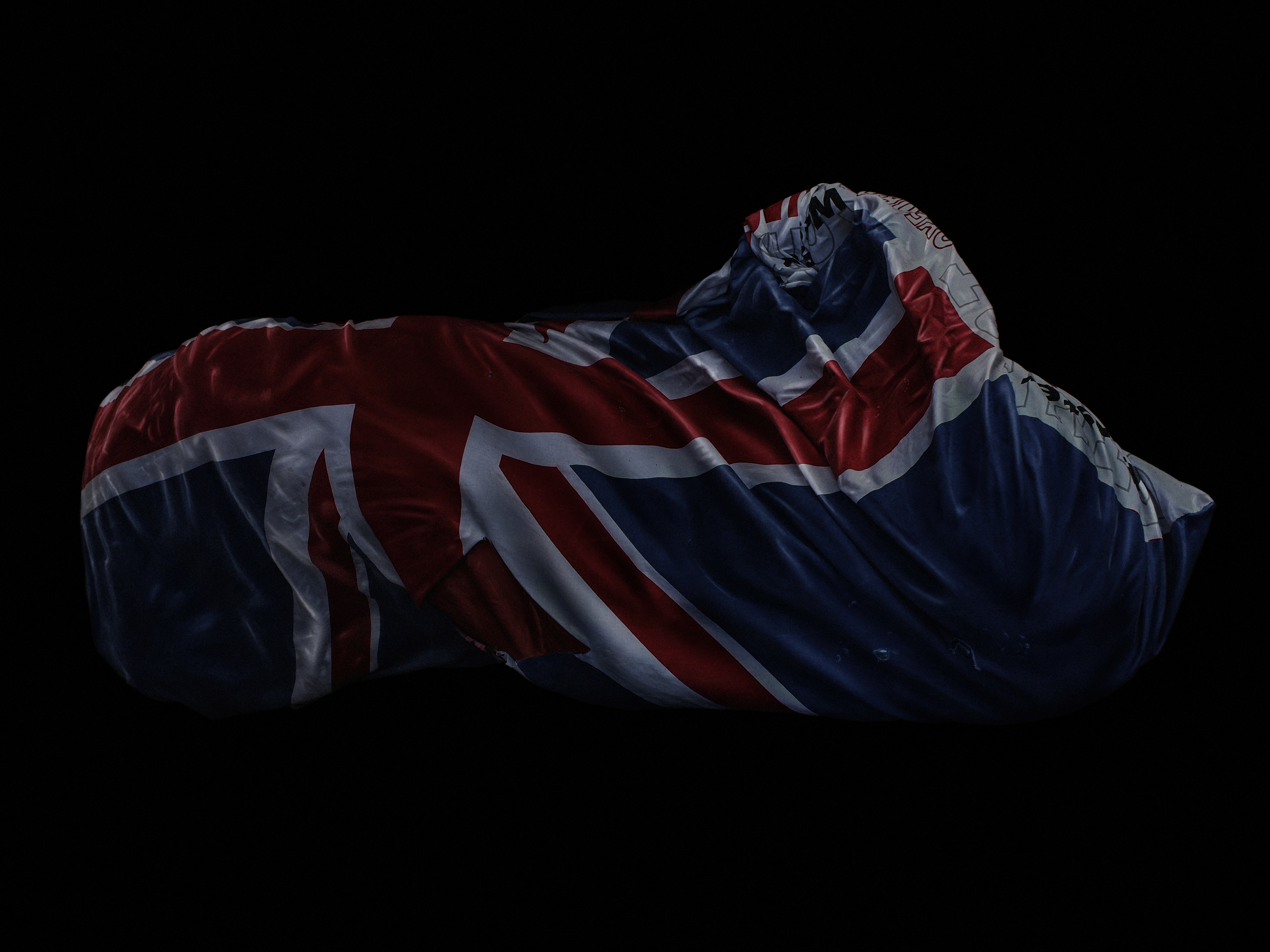
Floating #39 (2017)
Impressão com tinta à base de pigmentos em papel Hahnemuehle Fine Art Baryta.
67.5cm x 90cm
© Cortesia de Nikolaj Bendix Skyum Larsen
Qualquer tentativa de resposta a estas perguntas conduz à questão do que vemos e do que não vemos. Por outras palavras, o que se torna visível e o que permanece invisível no processo seletivo do chiaroscuro. As imagens de Larsen manipulam cuidadosamente a luminosidade e a escuridão nas formas e no fundo, dando a impressão que as suas personagens flutuam ou resplandecem sobre um vazio. O medo do vazio, na sua relação com a ideia de sublime, foi historicamente representado nas obras de artistas como Turner, Monet e Twombly. Nas imagens de Larsen, o preto é, num primeiro olhar, um fundo simples e passivo. Contudo, uma leitura esclarecida relembra o vazio que estas pessoas adormecidas tiveram de enfrentar nos seus périplos de fuga dos seus próprios lares. Em última análise, os cobertores e os seus padrões - como, por exemplo, o tecido floreado - são como casulos únicos, permitindo ao corpo descansar e à mente florir, revelando, no melhor dos casos, uma borboleta que encontrou a força para partir de onde permaneceu demasiado tempo, (re)começando a sua nova vida.
Os retoques e a luz tornam os corpos visíveis num modo que nos faz olhar e perceber estes indivíduos - que a maioria prefere ignorar - enquanto pessoas belas e importantes, como objetos cristalizados em pinturas do Renascimento. As mantas que cobrem os corpos flutuantes acrescentam a sua própria história à narrativa imanente da The Floating Series. A bandeira de Inglaterra estampada numa manta e um saco-cama com um super-homem parecem evocar um desejo de alcançar um mundo ocidental onde os super-heróis existem e podem salvar-nos, ao mesmo tempo que um tigre protege uma pessoa adormecida e, no tecido azul profundo quase vemos Maria, Mãe de Jesus, na pintura A Virgem e o Menino (1427) de Masaccio. Este é o impacto notável do chiaroscuro em The Floating Series: a luz brilhante que atribui humanidade e sentimento às imagens é, na realidade, testemunha de uma horrível tragédia que, independentemente de toda a cobertura mediática, parece permanecer invisível em muitos níveis sociais e políticos.

Floating #43 (2017)
Impressão com tinta à base de pigmentos em papel Hahnemuehle Fine Art Baryta.
67.5cm x 90cm
© Cortesia de Nikolaj Bendix Skyum Larsen
O modo como somos confrontados com migrantes nas imagens de Larsen é radicalmente diferente do modo como vemos as mesmas pessoas representadas nos noticiários. Enquanto a imagética mediática obedece a um ritmo acelerado, as imagens de Larsen dão e pedem tempo, tanto aos sujeitos representados como ao espetador, permitindo a reflexão. Num primeiro olhar, The Floating Series saúda-nos com belas formas escultóricas, cobertas por panos, que pairam sobre um fundo calmo. Precisamos de tempo para ver o que poderá estar por debaixo - debaixo do pano, debaixo do fundo negro, debaixo da pintura. Precisamos de tempo para ver que se tratam de corpos exaustos, que flutuam metaforicamente para longe das suas realidades. Enquanto que os média nos dizem para pensar nos migrantes enquanto uma massa ameaçadora, o “Outro”, através de táticas que parecem validar a ideia de “eles” oposta a “nós”, o artista convida o espetador a ver os migrantes e as migrações - a questão política mais premente na Europa atual - de um modo diferente. As implicações do estado “submarino” das formas de subjetividade presentes no trabalho de Larsen parecem conjurar o sublime e o estado subliminar dos tempos nos quais que vivemos. E esse estado é tão avassalador quanto aterrorizador. Quais são as consequências para os desafios políticos e humanitários com que nos deparamos hoje? Este é um convite para parar e refletir perante uma perceção alternativa da realidade. Cabe a cada um de nós decidir como responder a este convite.
Christine Muller, Camilla Mongini, Baptiste Guimiot
Nikolaj Bendix Skyum Larsen
The Floating Series (2016-ongoing)
Amongst the most daunting tasks for artists has been how to visually reflect upon the intricacies of the world we live in. Our contemporary times are shaped by multiple crises of globalization, the failure of many of the promises of political systems, and the rise of borders at a universal level. In Europe, from the Ukraine crisis to Brexit, from the current refugee emergency to new migration flows, from the threat of terrorism to populism and increasing movements of nationalism, new conflicts are taking shape, challenging once stable ideas of belonging, cohesion and hospitality. What can be said about our inability to perceive the ever-increasing migrant fluxes? How can an artist contribute to political and humanitarian challenges of this nature? Furthermore, can or should artists contribute to such political and humanitarian challenges? What does it help?

Floating #59 (2017)
Pigment print on Hahnemuehle Fine Art Baryta
90cm x 67.5cm
© courtesy of the Nikolaj Bendix Skyum Larsen
It is the context of these complex issues of contemporary conflictual phenomena, particularly in Europe, that the work of Nikolaj Bendix Skyum Larsen (1971, Denmark) addresses. This is especially the case with The Floating Series (2016-ongoing), which provides us with unexpected relations between visibility and invisibility.
The Floating Series is an ongoing series of manipulated photographs where the central motif (covered human bodies) is cut out, pasted unto a black background and subsequently retouched. Such technique in these images of bodies fully covered in colourful draperies seemingly floating in darkness, takes us to the universe of chiaroscuro Renaissance paintings which paved the way to the Baroque’s tenebrism. More than the formal universe of extreme contrasts of light and shade, it evokes the dramatic effect in portraits of aristocrats, self-portraits of artists, still life, and in religious passages such as Raphael’s iconic Transfiguration of Christ (1516-1520) in which the use of chiaroscuro is the tool to depict Christ, the light that enters the dark world of humankind.

Floating #69 (2017)
Pigment print on Hahnemuehle Fine Art Baryta
90cm x 67.5cm
© courtesy of the Nikolaj Bendix Skyum Larsen
However, the black backgrounds in The Floating Series do not depict religious scenes but a void, as if this endless void was a burden that the migrants ought to carry along their journey. As for the individuals portrayed in the foreground, they are neither aristocrats nor Biblical characters; they are in fact migrants photographed in the Parisian neighbourhood of Stalingrad in 2016. For two months Nikolaj Bendix Skyum Larsen spent time in the neighbourhood to speak with the people living there where he felt urged to try and find a way to visually react to their desperate situation. Refugees, forced to leave their countries to escape war, oppression and poverty for Europe, would find themselves with no option but to live on the streets. In most cases they would be forcibly removed, as the 2000 refugees would tell after expulsion from the Parisian neighbourhood of Stalingrad in November 2016. What does the information that the one behind the cloth is a real person living on the street do to the image? Is it a sad image of our times? Is it a provocation to make us act upon our reality? Or is it exploitative of a reality of the vulnerable people portrayed?

Floating #39 (2017)
Pigment print on Hahnemuehle Fine Art Baryta
67.5cm x 90cm
© courtesy of the Nikolaj Bendix Skyum Larsen
Any attempt to answer these questions takes us back to what we see and to what we don’t see. In other words, to what becomes visible and what remains invisible in the selective process of chiaroscuro. Larsen’s images carefully manipulate the lightness and darkness of the shapes and background in a way that makes his characters seem to float and shine over a void. The fear of the void, in its relationship to the idea of the sublime, has been historically portrayed through the work of artists such as Turner, Monet and Twombly. In Larsen’s images, the black is, at first sight, a simple and passive background. However, an informed reading will remind us of the void that these sleeping people had to face in their forced paths escaping home. Ultimately, the blankets and their patterns – such as the colourful flowered cloth - are like unique cocoons, allowing the body to rest and the mind to flourish, and will hopefully reveal a butterfly which will find the strength to fly away from where it stayed for too long and begin its new life.
The retouching and the light make the bodies visible in ways which make us as look at and perceive these individuals –who most people would rather ignore– as beautiful and important people, like the aristocrats and religious figures depicted in Renaissance paintings. Each covered person levitating in this void is covered in a blanket, each adding its own story to the narrative told by The Floating Series. A Union Jack flag on a blanket and a Spiderman sleeping bag seem to unveil a desire to get to a Western world where super-heroes can save us, all the while a tiger seems to protect the sleeping person and the deep blue cloth makes this body resemble Mary, mother of Jesus, in the Italian Renaissance painting Madonna and Child (1427) by Masaccio. This is the striking effect of chiaroscuro in The Floating Series: the bright light it gives to tenderness and humanity in the images that are in fact witnesses of a horrible tragedy, despite all media coverage, seem to remain invisible at many social and political levels.
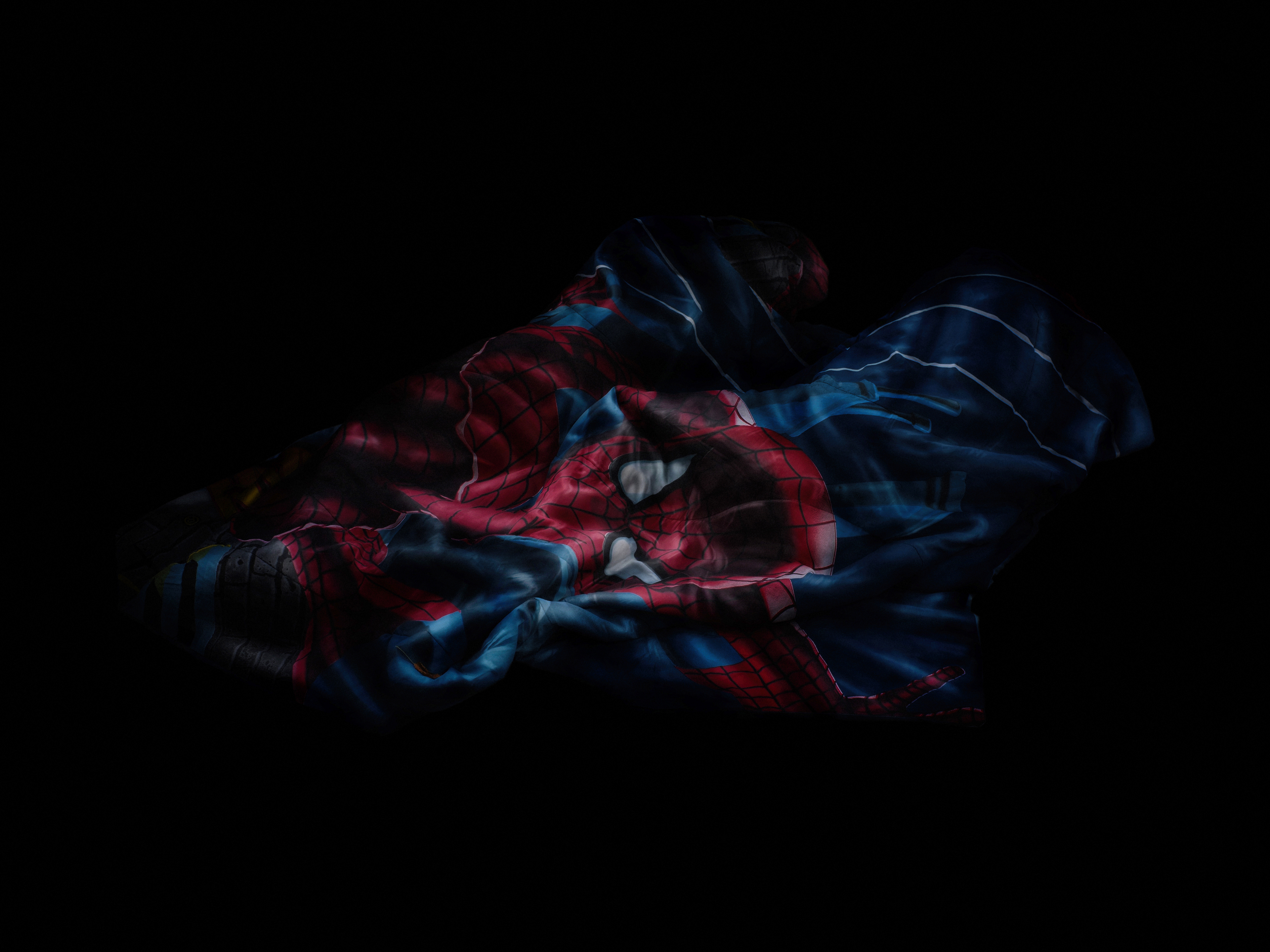
Floating #43 (2017)
Pigment print on Hahnemuehle Fine Art Baryta
67.5cm x 90cm
© courtesy of the Nikolaj Bendix Skyum Larsen
The way we are confronted with migrants in Larsen’s images is radically different from how we would see the same people in the news. Whereas media imagery is fast paced in its narrated quick fix reports and asks for immediate (or none at all) response, the layers in Larsen’s images gives time to both the subjects portrayed and to the viewer, allowing time for reflection. At first glance, The Floating Series greets us with beautiful sculpture-like shapes draped in cloth floating over a calm black background. It takes time to see what it might be to be beneath – beneath the cloth, beneath the black void and beneath the paint. It takes time to see that these are exhausted bodies metaphorically floating away from their realities. While media tell us to see migrants and refugees as a threatening mass, as 'the Other' in ways that seem to validate an idea of “them” opposed to “us”, the artist invites the viewer to look at migrants and migration – today’s most pressing political topic in Europe– in a different way. The broader implications of the “submarine” state for the forms of subjectivity at stake in Larsen’s work seems to conjure the sublime and the subliminal state of the times we are living in. And such a state is as overwhelming as terrifying. What does this do to the political and humanitarian challenges we are facing today? It certainly invites us to stop and to reflect. Furthermore, it presents us an alternative perception of reality. What we do with this invitation and perception is, nevertheless, entirely up to us.
Christine Muller, Camilla Mongini, Baptiste Guimiot








